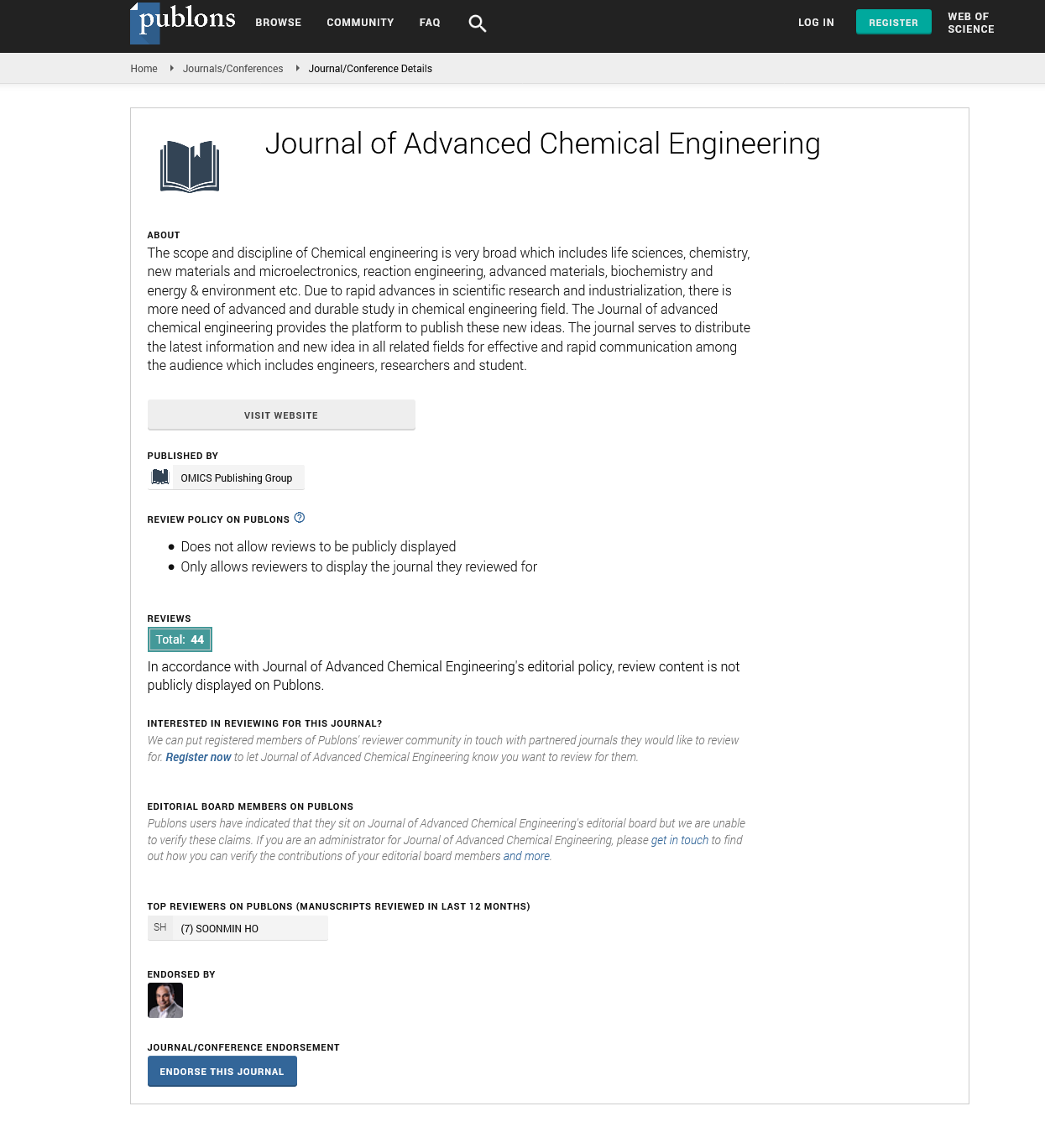Indexed In
- Open J Gate
- Genamics JournalSeek
- Smithers Rapra
- RefSeek
- Directory of Research Journal Indexing (DRJI)
- Hamdard University
- EBSCO A-Z
- OCLC- WorldCat
- Scholarsteer
- Publons
- Geneva Foundation for Medical Education and Research
- Google Scholar
Useful Links
Share This Page
Journal Flyer

Open Access Journals
- Agri and Aquaculture
- Biochemistry
- Bioinformatics & Systems Biology
- Business & Management
- Chemistry
- Clinical Sciences
- Engineering
- Food & Nutrition
- General Science
- Genetics & Molecular Biology
- Immunology & Microbiology
- Medical Sciences
- Neuroscience & Psychology
- Nursing & Health Care
- Pharmaceutical Sciences
Short Commentary - (2023) Volume 13, Issue 3
Various Types of Electrolysis Methodologies and Developments
Jim Steve*Received: 02-Jun-2023, Manuscript No. ACE-23-22202; Editor assigned: 05-Jun-2023, Pre QC No. ACE-23-22202 (PQ); Reviewed: 19-Jun-2023, QC No. ACE-23-22202; Revised: 26-Jun-2023, Manuscript No. ACE-23-22202 (R); Published: 03-Jul-2023, DOI: 10.35248/2090-4568.23.13.294
Description
Electrolysis is a fundamental electrochemical process that involves the decomposition of a compound using an electric current. It is widely employed in various industries and scientific research due to its ability to drive chemical reactions and facilitate the production of valuable substances.
Principles of electrolysis
Electrolyte: Electrolysis requires the presence of an electrolyte, a substance that can conduct electricity when dissolved or in a molten state. The electrolyte consists of ions that are free to move within the solution or the molten material.
Electrodes: Electrodes are essential components of the electrolysis setup. The anode is the positively charged electrode where oxidation occurs, while the cathode is the negatively charged electrode where reduction takes place.
Electric current: An external power source, such as a battery or a Direct Current (DC) power supply, is connected to the electrodes. The electric current passes through the electrolyte, causing chemical reactions at the anode and cathode.
Types of electrolysis
Water electrolysis: Water electrolysis involves the decomposition of water (H2O) into hydrogen gas (H2) at the cathode and oxygen gas (O2) at the anode. This process is used for hydrogen production, energy storage, and in fuel cell applications.
Electrorefining: Electrorefining is a process used to purify metals by electrolysis. It involves the dissolution of impure metal into an electrolyte, followed by the deposition of pure metal onto the cathode. Electrorefining is commonly used in the refining of copper, zinc, and nickel.
Electroplating: Electroplating is the deposition of a metal coating onto a surface using electrolysis. The object to be plated serves as the cathode, while a metal salt solution acts as the electrolyte. Electroplating is employed for decorative purposes, corrosion protection, and enhancing the properties of objects.
Applications of electrolysis
Hydrogen production: Electrolysis of water is a key method for producing hydrogen gas, which can be used as a clean and sustainable energy carrier. Hydrogen generated through electrolysis has applications in fuel cells, energy storage, and as a feedstock for various chemical processes.
Metal refining and extraction: Electrolysis is used in the refining and extraction of metals. It enables the purification of impure metals, the recovery of valuable metals from solutions, and the production of high-purity metals for various industrial applications.
Advancements in electrolysis
Alkaline water electrolysis: Alkaline water electrolysis is a well-established method for hydrogen production. Recent advancements focus on improving the efficiency and reducing the costs associated with this process. Research efforts are aimed at developing new catalysts, membrane materials, and system designs to enhance the overall performance of alkaline electrolyzers.
Polymer Electrolyte Membrane (PEM) water electrolysis: PEM water electrolysis offers several advantages, including high efficiency, fast response times, and compact system design. Ongoing research focuses on developing advanced PEM materials, catalysts, and system architectures to further improve the performance and commercial viability of this technology.
Solid Oxide Electrolysis Cells (SOEC): SOECs operate at high temperatures and can directly convert carbon dioxide (CO2) and water into syngas or hydrogen. This technology holds promise for carbon capture and utilization, as it can utilize waste heat or renewable energy sources to drive the the electrolysis process efficiently.
Conclusion
Electrolysis stands as a fundamental electrochemical process with immense significance in various industries and scientific fields. By leveraging the principles of electrolysis, such as the presence of an electrolyte, the role of electrodes, and the application of an electric current, it becomes possible to drive chemical reactions and produce valuable substances.
Citation: Steve J (2023) Various Types of Electrolysis Methodologies and Developments. Adv Chem Eng. 13:294.
Copyright: © 2023 Steve J. This is an open-access article distributed under the terms of the Creative Commons Attribution License, which permits unrestricted use, distribution, and reproduction in any medium, provided the original author and source are credited.

